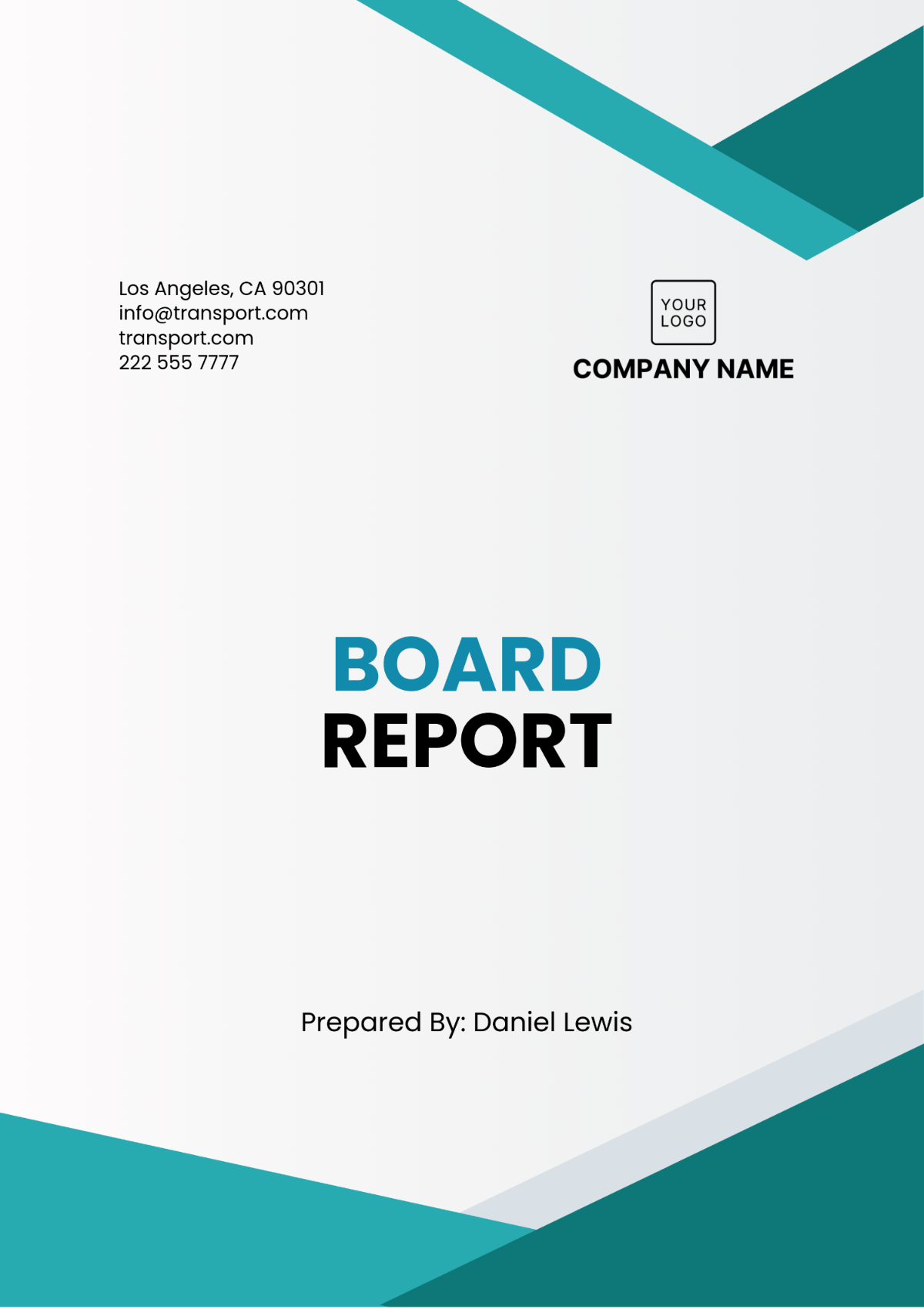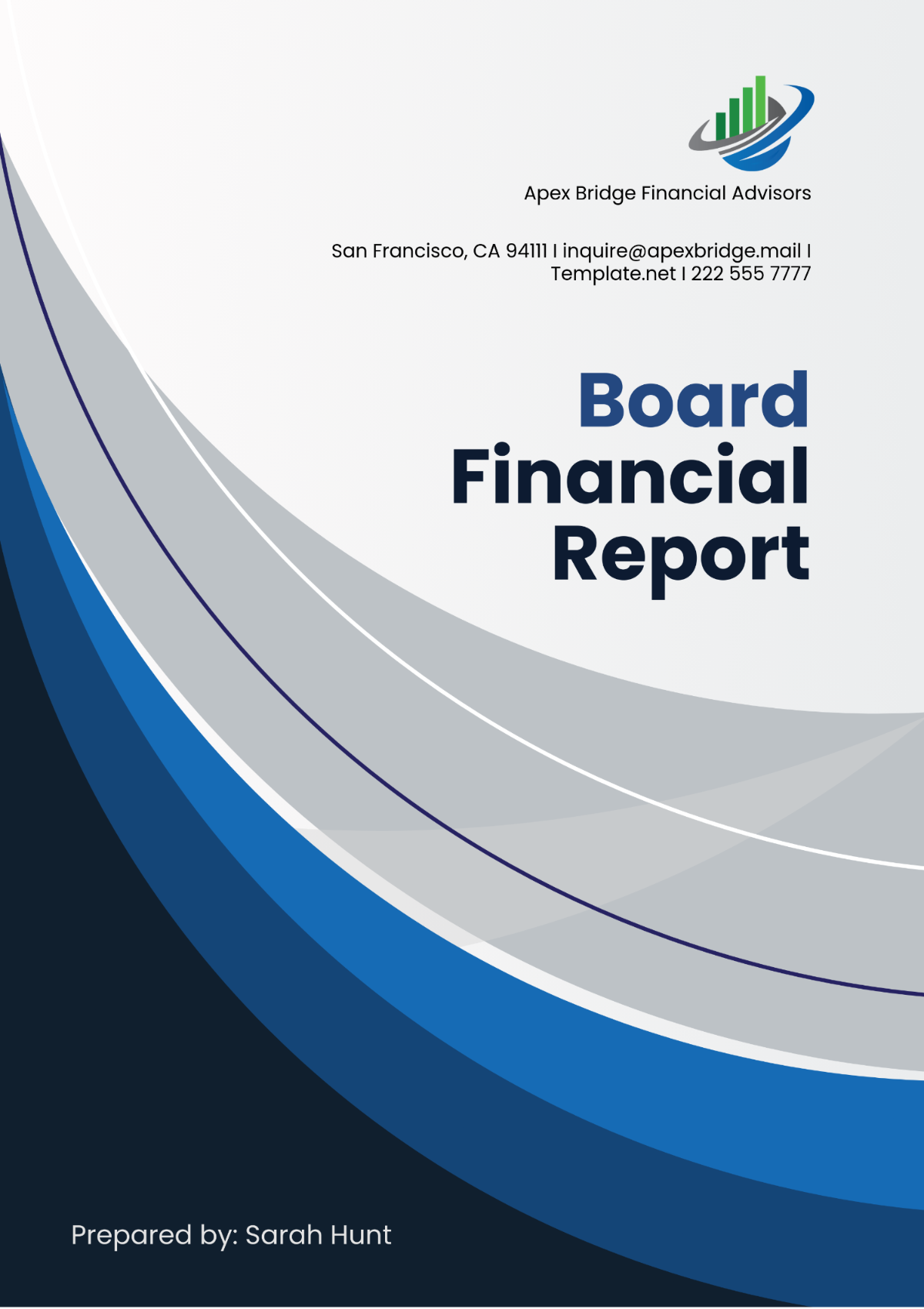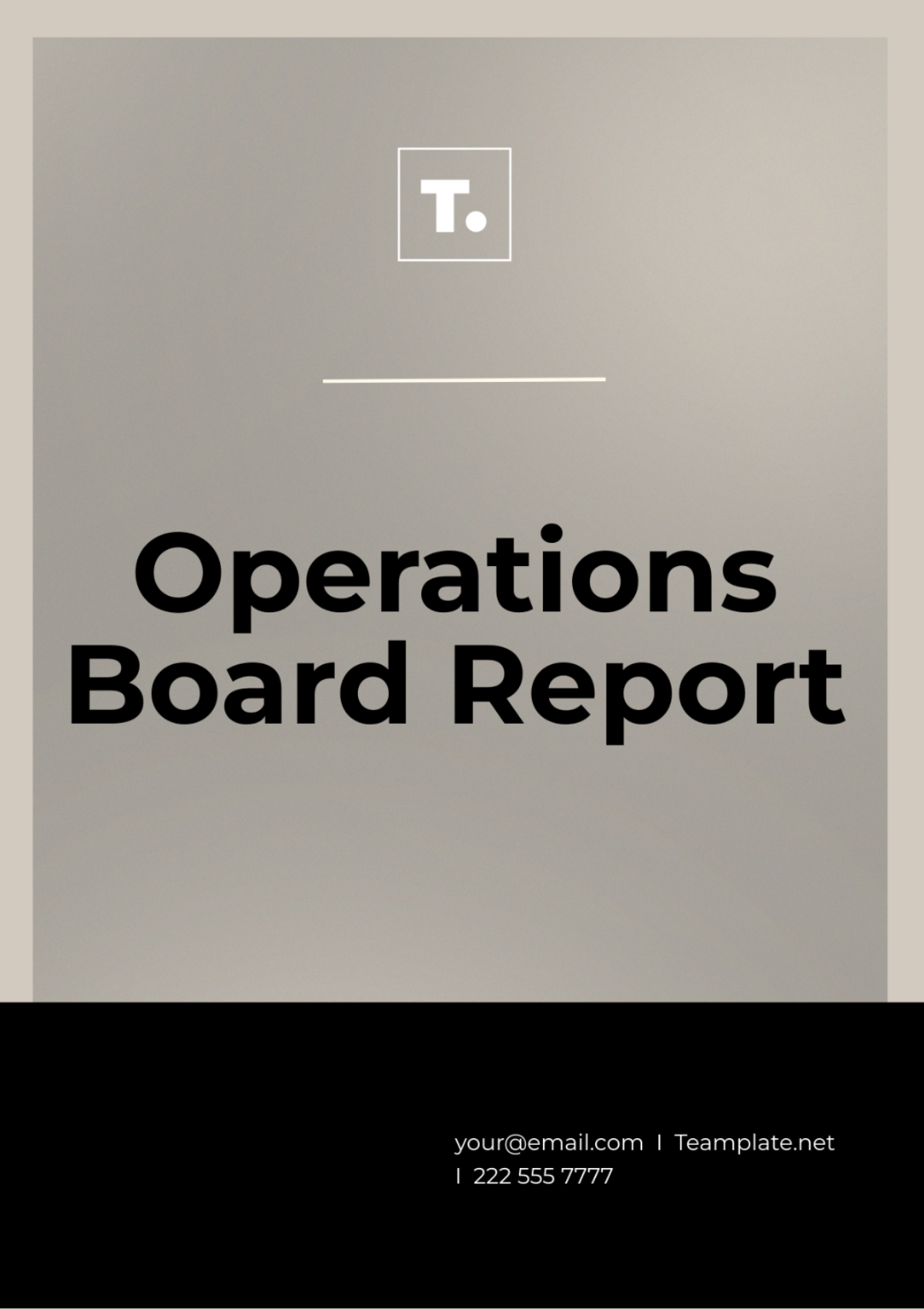Board Risk Report
I. Introduction
The Board Risk Report aims to provide comprehensive insights into the various risks faced by [YOUR COMPANY NAME] during the first half of the fiscal year. This report will guide the board in understanding, assessing, and mitigating these risks. The report is divided into several sections, each focusing on different aspects of risk management.
II. Risk Identification
1. Operational Risks
Operational risks are inherent in the day-to-day operations of [YOUR COMPANY NAME]. They include disruptions to supply chain processes, personnel management challenges, and IT system failures. Identifying these risks is crucial to maintaining efficiency and consistency in operations.
Risk Type | Description | Potential Impact |
|---|---|---|
Supply Chain Disruption | Delays in supply delivery due to external factors. | High financial loss and operational delay. |
IT System Failure | Downtime of critical IT systems affecting operations. | High data loss and productivity halt. |
2. Financial Risks
Financial risks impact the stability and profitability of [YOUR COMPANY NAME]. Monitoring currency fluctuations, investment risks, and credit risks is essential in safeguarding financial integrity.
Currency Fluctuations: Volatility in exchange rates affecting international operations.
Credit Risk: Possibility of default on financial obligations from clients.
Investment Risk: Potential losses from investment decisions in volatile markets.
3. Regulatory and Compliance Risks
[YOUR COMPANY NAME] must adhere to industry regulations and standards to avoid legal repercussions. Identifying gaps in compliance helps mitigate risks of fines and operational shutdowns.
Compliance Area | Description | Risk Level |
|---|---|---|
Data Protection | Ensuring secure handling of personal data as per GDPR. | High |
Environmental Compliance | Adherence to environmental regulations to prevent fines. | Medium |
III. Risk Assessment
1. Likelihood and Impact Analysis
Assessing the likelihood of risks occurring and their impact is fundamental to prioritizing risk management efforts. This involves quantifying risks on a scale of probability and their potential effect on operations.
Operational Risks:
Supply Chain Disruption: High likelihood, High Impact
IT System Failure: Medium Likelihood, High Impact
Financial Risks:
Currency Fluctuations: Medium Likelihood, Medium Impact
Credit Risk: Low Likelihood, High Impact
2. Risk Prioritization
Prioritizing risks helps allocate resources efficiently toward mitigative efforts. High priority is given to risks with a combination of high likelihood and impact.
Highest Priority: Supply Chain Disruption, IT System Failure
Moderate Priority: Currency Fluctuations, Compliance Gaps
IV. Risk Mitigation Strategies
1. Strategies for Operational Risks
To mitigate operational risks, [YOUR COMPANY NAME] focuses on enhancing the supply chain's agility and investing in robust IT infrastructure. Implementing redundancy and backup systems ensures business continuity.
2. Strategies for Financial Risks
Effective financial risk mitigation involves diversifying currency exposure and strengthening credit evaluation processes. Regular review of investment portfolios aids in adapting to market changes.
3. Strategies for Regulatory and Compliance Risks
Ensuring continuous staff training on regulatory compliance and regular audits helps in identifying and addressing compliance gaps. Adoption of comprehensive risk management software supports monitoring and reporting efforts.
V. Conclusion
The Board Risk Report highlights critical risks and provides actionable strategies to mitigate them, ensuring organizational resilience and stability. Continuous monitoring and evaluation of these strategies are essential to adapting to dynamic risk environments.
The board is encouraged to regularly review this report to stay informed about emerging risks and mitigation progress.















































